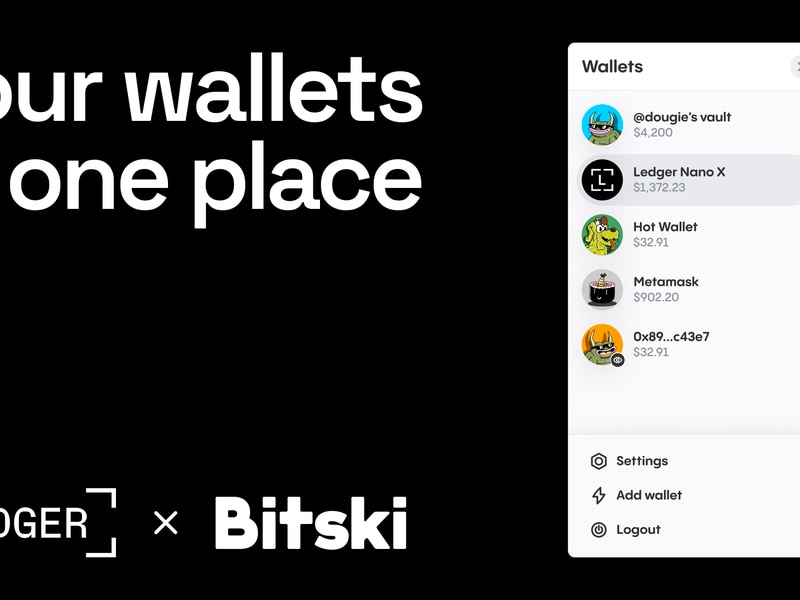Blockchain Bites: JPMorgan’s $146K BTC Target, Crypto Responds to US Treasury’s Proposed Wallet Rule
Blockchain Bites: JPMorgan’s $146K BTC Target, Crypto Responds to US Treasury’s Proposed Wallet Rule
Hello. A late night interpretative letter from the Office of the Comptroller of the Currency (OCC), the U.S.’ federal banking regulator, saying banks can act as stablecoin nodes was the juice needed to push bitcoin out of the doldrums. JPMorgan analysts see a future where 1 BTC could trade hands near $150,000, according to a new report.
In other regulatory news, the comment period for a controversial wallet rule closed, with many heavy hitters coming out against the U.S. Treasury’s proposed rules to increase exchange surveillance. More on that later, first the top stories for the day.
Top shelf
Banking on stablecoins
A new letter from the U.S. federal banking regulator could give stablecoin networks the same status as other global payments networks like SWIFT or FedWire. In a possible last act from Acting Comptroller Brian Brooks, U.S. banks can now operate as stablecoin nodes and are free to send transactions, so long as they comply with securities and other regulations. Bitcoin markets rebounded on the news.
Supply crunch
Bitcoin mining machine prices are soaring along with bitcoin’s price. According to data reviewed by CoinDesk, a surge in mining revenue, limited manufacturing capacities and a number of new mining entrants has led to a supply shortage. It doesn’t help that established players like Riot and Marathon (both publicly traded) have been buying up the most up-to-date ASICs miners.
Brazil’s market
The battle to control Brazil’s growing crypto retail sector is heated, with Argentina’s Ripio acquiring BitcoinTrade, the second-largest crypto exchange in South America’s largest economy. Last month, Mexico City-based crypto exchange Bitso raised a $62 million funding round, a chunk of which was earmarked for a Brazil push, the company said.
Quick bites
- RIPPLE EFFECT: Grayscale drops XRP from Large Cap Crypto Fund following Ripple/SEC suit. (CoinDesk)
- TRADEBLOCK BUY: CoinDesk has acquired institutional analytics and data provider TradeBlock. (WSJ)
- MINING PIVOT: Two former Canaan directors are helping a Chinese mobile gaming company enter the crypto mining sector. (CoinDesk)
- VOYAGING OUT: Cryptocurrency broker Voyager Digital says Q4 revenue is expected to reach around $3.5 million, an increase of 75% from the previous quarter. (CoinDesk)
- TOKEN GENERATOR: Crypto exchange LCX is now licensed in Liechtenstein to help banks create their own digital assets and security tokens. (CoinDesk)
- FIRST MOVER: DeFi keeps astounding. (CoinDesk)
- KNOWN UNKNOWN? One River has completed “one of the largest digital asset trades in history,” according to facilitator Coinbase. The amount is unknown. (Decrypt)
Market intel
Gold bugs
A new investment report from JPMorgan has set a $146,000 price target for bitcoin. The bullish target is the latest analytical note that wagers bitcoin will become a popular alternative to gold. “Bitcoin’s [current] market capitalization of around $575 billion would have to rise by 4.6 times – for a theoretical bitcoin price of $146,000 – to match the total private sector investment in gold via exchange-traded funds or bars and coins.” The one thing holding the bitcoin beast at bay? Volatility.
At stake
11th hour?
A comment period for a proposed set of rules that would increase reporting requirements for crypto exchanges and minimize blockchain user privacy closed yesterday, with many major crypto firms rejecting the maneuver.
Spearheaded by the U.S. Treasury Department in December, but shaped primarily by the global Financial Crimes Enforcement Network (FinCEN), the set of rules would see exchanges implement know-your-customer (KYC) requirements for transactions sent to unhosted wallet addresses, or addresses that exist outside a centralized or custodial setting.
This would mean many types of personal wallets as well as counterparties to exchanges’ customers would need to be identified. Reporting limits would be set for private wallets that receive more than $10,000 in 24 hours, and record-keeping rules for transactions valued at over $3,000. FinCEN and the Treasury Department claim the increased surveillance will aid criminal enforcement and reduce financial malfeasance.
The proposal was rushed out late on Friday, Dec. 18 – a week before many U.S. employees might expect to break for the winter holiday season – with the Treasury setting only a 15-day comment period. Many crypto industry commentators referred to the rushed timeline as onerous and potentially illegal.
Still, some 6,000 comments were filed with FinCEN within this narrow window, with firms such as Square, Andreessen Horowitz (a16z), Kraken as well as civil liberties organizations including the Electronic Frontier Foundation (EFF) and Coin Center coming out hard against the proposal. The reporting period has since been “extended” until Jan. 7.
“The process itself is fraught with an ‘us-versus-them’ hostility to the industry’s views – as seen by the breakneck schedule for a major rule, the thinness of Treasury’s justifications, and the lack of meaningful engagement before the eleventh-hour holiday rule making,” cryptocurrency platform Coinbase said, in a prepared statement.
While the rushed timeline was a frequent target – the rule was proposed as United States Secretary of the Treasury Steven Mnuchin is set to leave office – others noted the perverse effects these new reporting requirements could have for the fledgling crypto industry.
“This creates unnecessary friction and perverse incentives for cryptocurrency customers to avoid regulated entities for cryptocurrency transactions, driving them to use non-custodial wallets or services outside the U.S. to transfer their assets more easily,” Jack Dorsey, CEO of payments company Square, wrote.
In a press release, Kraken noted the proposed rule would be a “substantial departure from existing law.” And one, that if passed, Coinbase and a16z have pledged to fight in court.
In defense of the proposal, CoinDesk columnist and financial blogger John Paul Koning tweeted the rules would bring the crypto industry in line with practices already in place for money transmitters, such as those followed by remittance giant MoneyGram.
“Coinbase sending cryptocurrency to an unhosted address is like MoneyGram remitting physical cash to a stranger. MoneyGram has to collect personal information about the stranger. Shouldn’t Coinbase have to collect information about the unhosted wallet?” Koning wrote.
In response, Coin Center Director of Research Peter Van Valkenburgh, wrote that “equating a blockchain transaction to a funds transfer ignores the obvious difference … blockchain transactions can happen peer to peer while wires are always intermediated.”
Indeed, there are notable differences between the two systems of value transfer. With blockchains providing a public ledger of all transactions, an increased reporting rule could be a great intrusion into an exchange user’s financial privacy than simply identifying the recipient of a remittance – the total history of both counterparties financial lives would be on full view, including those that are unrelated to any centralized exchange.
As the EFF said in its statement against FinCEN’s rules: “Anonymity is important precisely because financial records can be deeply personal and revealing: They provide an intimate window into a person’s life, revealing familial, political, professional, religious and sexual associations.”
Who won #CryptoTwitter?











